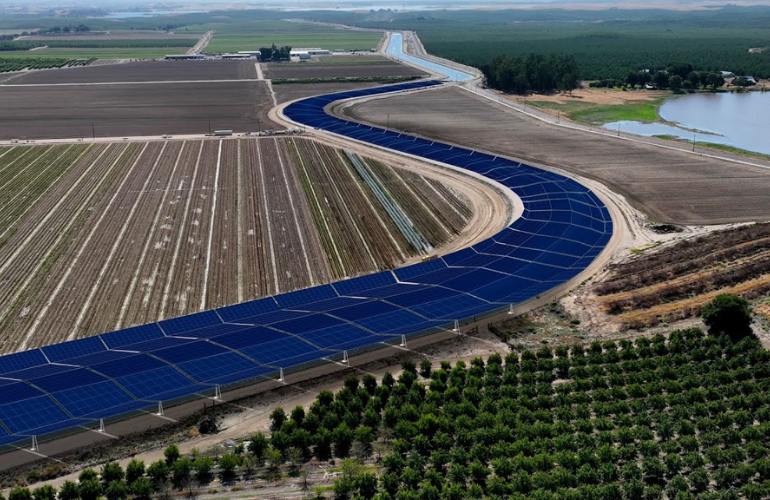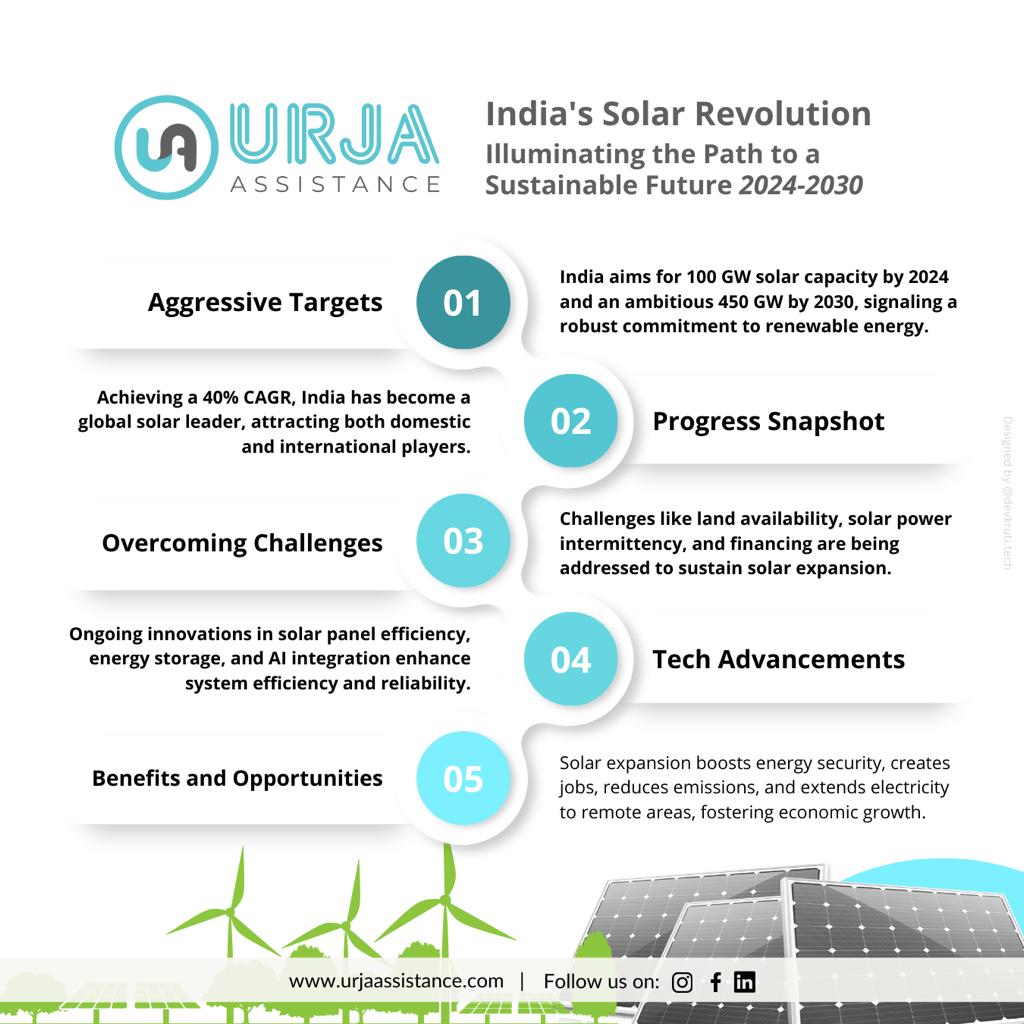As the world moves towards sustainable energy sources, solar power has emerged as one of the frontrunners in the energy transition. In India, the future prospects of solar energy expansion from 2024 to 2030 are looking brighter than ever. With increasing government support and a favorable policy framework, the solar energy landscape in India is poised for significant growth in the coming years.
India, known for its abundant sunlight, has been harnessing the power of the sun to meet its energy needs. The government’s ambitious targets and initiatives to promote solar power have led to a surge in installations across the country. As a result, India is now one of the leading solar energy producers globally.
Current state of solar energy in India
India has made remarkable progress in the solar energy sector in recent years. As of 2021, the country’s total installed solar capacity stands at around 40 GW, contributing significantly to the overall renewable energy mix. The solar energy sector has seen rapid growth, with installations increasing at a compound annual growth rate (CAGR) of over 40% in the last decade.
The solar industry in India has attracted both domestic and international players, leading to increased competition and innovation. The country has also witnessed the emergence of solar parks and clusters, which provide a conducive environment for large-scale solar projects. These developments have contributed to the overall growth and success of the solar energy sector in India.
However, despite the significant progress, there is still immense untapped potential in the solar energy sector. With favorable conditions and government support, India has the opportunity to become a global leader in solar energy production.

Solar energy capacity targets for 2024 and 2030
To accelerate the growth of solar energy in India, the government has set ambitious capacity targets for 2024 and 2030. As of 2021, India has a solar energy capacity of around 40 GW. The government aims to increase this capacity to 100 GW by 2024 and 450 GW by 2030.
The targets set by the government reflect its commitment to transitioning towards renewable energy sources and reducing dependence on fossil fuels. Achieving these targets will require significant investments, technological advancements, and policy support.
To meet these capacity targets, India needs to install an average of over 30 GW of solar power every year until 2030. This requires a concerted effort from all stakeholders, including the government, developers, investors, and consumers.
Challenges and obstacles in the expansion of solar energy
While the future prospects of solar energy expansion in India are promising, there are several challenges and obstacles that need to be addressed. One of the key challenges is the availability of land for setting up solar projects. Large-scale solar installations require vast areas of land, which can be a constraint in densely populated regions.
Another challenge is the intermittency of solar power. Solar energy is only generated during daylight hours, which means there is a need for energy storage solutions to ensure a consistent power supply. The development of efficient and cost-effective energy storage technologies is crucial for the expansion of solar energy.
Additionally, financing and investment for solar projects remain a challenge. Despite the declining costs of solar panels, the upfront investment required for solar installations can be significant. Access to affordable financing options and attractive returns on investment are essential to attract more investors and accelerate the expansion of solar energy in India.
Technological advancements in solar energy
Technological advancements play a crucial role in the expansion of solar energy. Over the years, there have been significant improvements in solar panel efficiency, durability, and cost-effectiveness. The development of new materials, such as perovskite solar cells, has the potential to revolutionize the solar industry.
Furthermore, innovations in energy storage technologies, such as advanced batteries and pumped hydro storage, can address the intermittency issue associated with solar power. These advancements enable the efficient utilization of solar energy and enhance grid stability.
The integration of artificial intelligence (AI) and machine learning (ML) in solar energy systems is another area of technological advancement. AI and ML algorithms can optimize the performance of solar installations, predict energy generation, and enable smart grid management. These technologies have the potential to enhance the overall efficiency and reliability of solar energy systems.
Potential benefits and opportunities for solar energy expansion
The expansion of solar energy in India offers numerous benefits and opportunities. Firstly, it contributes to energy security by reducing dependence on imported fossil fuels. India, being a net importer of fossil fuels, can significantly enhance its energy independence through solar power.
Secondly, solar energy expansion creates job opportunities. The solar industry has the potential to generate a significant number of direct and indirect jobs, ranging from manufacturing and installation to maintenance and operation. This can contribute to economic growth and poverty alleviation.
Moreover, solar energy expansion can lead to a significant reduction in greenhouse gas emissions. By replacing fossil fuel-based power generation with clean solar energy, India can make substantial progress towards its climate change commitments.
Furthermore, solar energy can be harnessed in remote and off-grid areas, providing access to electricity in regions that are not connected to the conventional power grid. This can improve the quality of life, promote rural development, and bridge the energy divide.
Investment and financing options for solar energy projects
Investment and financing are crucial for the expansion of solar energy projects in India. Several financing options are available, including debt financing, equity financing, and public-private partnerships (PPPs).
Banks and financial institutions offer loans and credit facilities specifically designed for solar projects. These loans often come with attractive interest rates and flexible repayment terms, making them accessible to developers and investors.
In addition to traditional financing, innovative financing mechanisms, such as green bonds and crowdfunding, are gaining popularity in the solar energy sector. Green bonds allow investors to finance renewable energy projects, including solar, while crowdfunding platforms enable individuals to contribute to specific solar projects.
Public-private partnerships are another effective way to attract investments and accelerate solar energy expansion. Under PPPs, the government collaborates with private companies to develop and operate solar projects. This model leverages the expertise and resources of both the public and private sectors, driving investment and efficiency.
Key players in the solar energy industry in India
The solar energy industry in India is home to several key players, including both domestic and international companies. Some of the notable players in the Indian solar market are Tata Power Solar, Adani Solar, Azure Power, and Vikram Solar. These companies have a significant market share and have played a crucial role in driving the growth of solar energy in India.
In addition to companies, research institutions and academic organizations are also actively involved in solar energy research and development. These institutions contribute to technological advancements, policy recommendations, and capacity building in the solar energy sector.

Conclusion and future prospects of solar energy expansion in India
The future prospects of solar energy expansion in India from 2024 to 2030 are promising. With ambitious capacity targets, favorable government policies, and technological advancements, India has the potential to become a global leader in solar energy production.
However, to realize this potential, it is crucial to address the challenges and obstacles associated with solar energy expansion. Land availability, intermittency, financing, and technological advancements are key areas that require attention and investment.
By overcoming these challenges, India can reap the benefits of solar energy, including energy security, job creation, reduced emissions, and improved access to electricity. The expansion of solar energy will not only transform the energy landscape but also contribute to sustainable development and a greener future.
Overall, the future of solar energy in India looks bright, and it is an exciting time to be part of the solar energy revolution. As the country moves towards a cleaner and more sustainable energy future, solar power will play a critical role in shaping India’s energy landscape from 2024 to 2030 and beyond.

